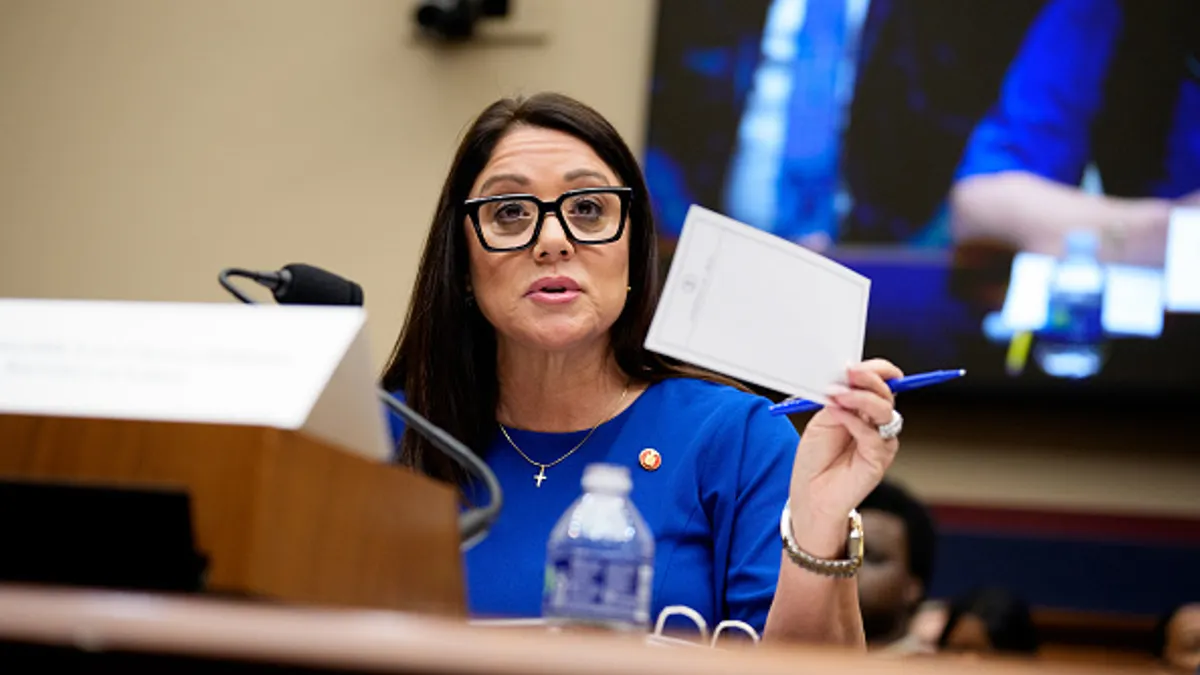Secretary of Labor Lori Chavez-DeRemer told congressional leaders last week that a slimmed-down OSHA would be just as effective as the current version in keeping the country’s workers safe.
Chavez-DeRemer underlined President Donald Trump' s goal of eliminating what she called waste and abuse in federal government spending and answered questions June 5 from the House Education and Workforce Committee on topics vital to construction, such as OSHA’s budget and heat safety standard.
“My department is hard at work collaborating with the Departments of Commerce and Education to unlock the potential of the American worker. We are looking to strengthen registered apprenticeships, modernize workforce development programs and invest in opportunities that upskill workers to meet current labor market demands,” Chavez-DeRemer said in her opening statement.
Budget and staff impacts
The Labor Department’s proposed FY 2026 budget allocates $582.4 million for OSHA, down from $632.3 million the year prior. It also would slash the number of full-time employees from 1,810 to 1,587.
When asked about proposed staff cuts by U.S. Rep. Ilhan Omar, D-Minn., who quoted the oft-used statistic that it would take OSHA staff nearly 200 years to visit every U.S. workplace, Chavez-DeRemer emphasized that members of OSHA and the DOL’s Wage and Hour Division are essential workers. As a result, they are not permitted to take the Department of Government Efficiency’s deferred resignation program offer, Chavez-DeRemer said.
“American workers can expect that the Department of Labor will protect the American worker as that is a core mission of the Department of Labor,” she said.
When U.S. Rep. Lucy McBath, D-Ga., asked how the department could crack down on issues like wage theft with a smaller budget and fewer workers, Chavez-DeRemer said she believed the budget would “modernize and streamline” the department.
“If we equate that to the budget and say, that again, more money will always solve the problem? I would probably have to disagree there,” she said.
Proposed heat rule still alive
When Trump won the 2024 election, it appeared that the proposed OSHA heat safety rule would likely never come to pass, at least not in the form developed during the Biden administration.
Critics of the standard have said it is too detailed and prescriptive, which can make it onerous and problematic for compliance. Safety advocates say too often workers are denied water and rest breaks in the absence of a standard.
The standard is still in the rulemaking process, and OSHA will host hearings on it beginning June 16.
Despite being asked multiple times, Chavez-DeRemer did not give much insight into her opinion on the specifics of the rule, such as how often workers should get breaks during times of extreme heat.
“I will not give my personal opinion because as a Secretary of Labor I cannot put my thumb on the scale,” she said.
She did, however, agree with U.S. Rep. Mark Messmer, R-Ind., who took issue with the broadness of the rule.
“One size fits all usually is a pretty standard practice that doesn't always work for everybody geographically,” she said.















